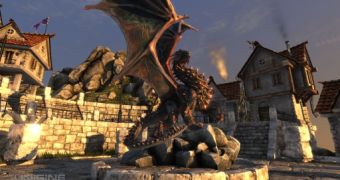The DirectX 11 3DMark 11 gaming benchmark is proceeding according to plan and, though it will only be available in the third quarter of the ongoing year, it has already been demonstrated on video. Meanwhile, consumers cannot have forgotten that, in addition to this tool, there is a certain other benchmark that can taste the limits of DirectX 11 as well. Known as the Heaven Benchmark, this software tool was developed by Unigine and has now received its latest update.
Contrary to how updates usually imply a few tweaks and engine optimizations, this newest update actually brings a pair of major improvements in the way of technological support. To be more specific, the Heaven benchmark 2.1 release adds support for the open API known as OpenGL 4.0. This API includes many of the DirectX 11 components, such as tessellation. The other major boon is the ability to enable stereo 3D in several modes.
This broader feature set will let Unigine's program even more accurately, and thoroughly, test the capabilities of any graphics card with support for DirectX 11. This mostly revolves around hardware tessellation, and the Heaven Benchmark has three modes. The moderate mode, as its name implies, tests an adapter's ability to provide reasonable performance. The normal mode shows optimal quality-to-performance ratio, meant to “achieve prominent visual difference with hardware tessellation technology.”
The last mode, Extreme, is predictably meant to provide a challenge for even the strongest, next-generation DirectX 11 hardware. This setting should be able to push tessellation to the extreme on any adapter launched within the next 1-2 years. End-users may download the Unigine heaven 2.1 benchmark by following this link.
Changes in version 2.1:
-Support of OpenGL 4.0, including hardware tessellation; -Added stereo 3D support in several modes: anaglyph, separate images, 3D Vision and iZ3D; -Several minor optimizations.

 14 DAY TRIAL //
14 DAY TRIAL //